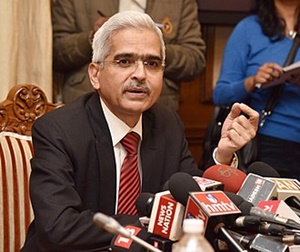The Monetary Policy Committee (MPC) of the Reserve Bank of India (RBI) at its meeting today decided to increase the policy repo rate under the liquidity adjustment facility (LAF) by 25 basis points to 6.50 per cent with immediate effect.

Consequently, the standing deposit facility (SDF) rate stands adjusted to 6.25 per cent and the marginal standing facility (MSF) rate and the Bank Rate to 6.75 per cent, RBI stated in a release.
The RBI said the MPC also decided to remain focused on withdrawal of accommodation to ensure that inflation remained within the target going forward, while supporting growth.
These decisions, the central bank added, are in consonance with the objective of achieving the medium-term target for consumer price index (CPI) inflation of 4 per cent within a band of +/- 2 per cent, while supporting growth.
The RBI noted an improvement in global growth outlook in recent months, despite the persistence of geopolitical hostilities and the impact of monetary policy tightening by central banks across the world. global growth, however, is expected to decelerate during 2023 despite the recent softening of inflation levels, that also prompted central banks to moderate the size and pace of rate actions.
Bond yields, however, remain volatile. The US dollar has come off its recent peak, and equity markets have moved higher since the last MPC meeting, RBI noted.
On the domestic front, RBI noted that the first advance estimates (FAE) released by the National Statistical Office (NSO) on 6 January 2023, placed India’s real gross domestic product (GDP) growth at 7.0 per cent year-on-year (y-o-y) for 2022-23, driven by private consumption and investment. On the supply side, gross value added (GVA) was estimated at 6.7 per cent.
High frequency indicators suggest that economic activity has remained strong in Q3 and Q4:2022-23. Rabi acreage exceeded last year’s area by 3.3 per cent as on 3 February 2023. Industrial production expanded by 7.1 per cent in November, after contracting by 4.2 per cent in October. Capacity utilisation in manufacturing is now above its long period average. Port freight traffic, e-way bills and toll collections were buoyant in December. Purchasing managers’ indices (PMIs) for manufacturing as well as services remained in expansion in January, despite some moderation compared to the previous month.
Domestic demand has been sustained by strong discretionary spending. Urban demand exhibited resilience as reflected in healthy passenger vehicle sales and domestic air passenger traffic. Rural demand is improving. Investment activity is gradually gaining ground. Non-oil non-gold imports expanded in December. Merchandise exports, on the other hand, contracted in December on weak global demand.
CPI headline inflation moderated to 5.7 per cent (y-o-y) in December 2022 – after easing to 5.9 per cent in November – on the back of double digit deflation in vegetable prices. On the other hand, inflationary pressures accentuated across cereals, protein-based food items and spices. Fuel inflation edged up primarily from an uptick in kerosene prices. Core CPI (ie, CPI excluding food and fuel) inflation rose to 6.1 per cent in December due to sustained price pressures in health, education and personal care and effects.
According to RBI, overall liquidity remained in surplus, with average daily absorption under the LAF increasing to Rs1.6 lakh crore during December-January from an average of Rs1.4 lakh crore in October-November. On a y-o-y basis, money supply (M3) expanded by 9.8 per cent as on 27 January 2023, while non-food bank credit rose by 16.7 per cent. India’s foreign exchange reserves were placed at $576.8 billion as on 27 January 2023.
RBI said the outlook for inflation remained mixed. While prospects for the rabi crop have improved, especially for wheat and oilseeds, risks from adverse weather events remain. The global commodity price outlook, including crude oil, is subject to uncertainties on demand prospects as well as from risks of supply disruptions due to geopolitical tensions.
The ongoing pass-through of input costs to output prices, especially in services, could continue to exert pressures on core inflation. The Reserve Bank’s enterprise surveys point to some softening of input cost and output price pressures in manufacturing. Taking into account these factors and assuming an average crude oil price (Indian basket) of $95 per barrel, inflation is projected at 6.5 per cent in 2022-23, with Q4 at 5.7 per cent. On the assumption of a normal monsoon, CPI inflation is projected at 5.3 per cent for 2023-24, with Q1 at 5.0 per cent, Q2 at 5.4 per cent, Q3 at 5.4 per cent and Q4 at 5.6 per cent, and risks evenly balanced, RBI added.























